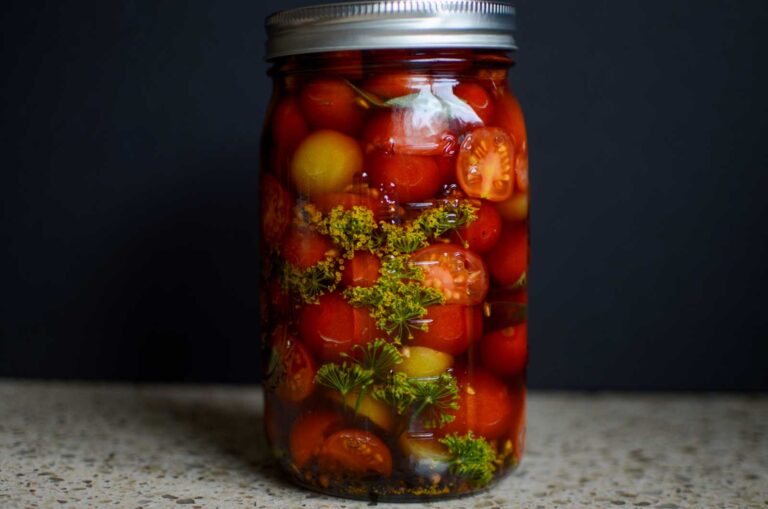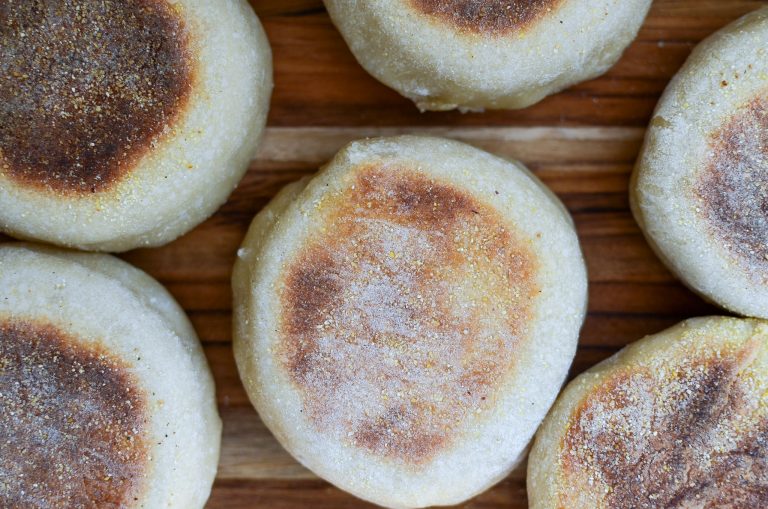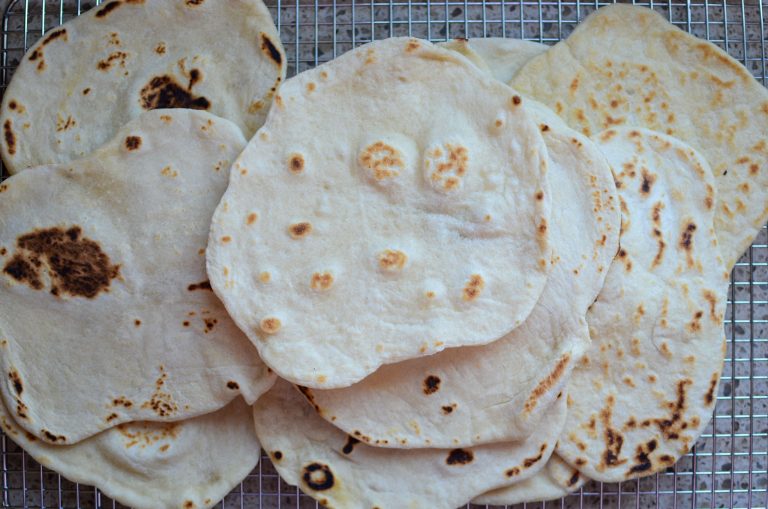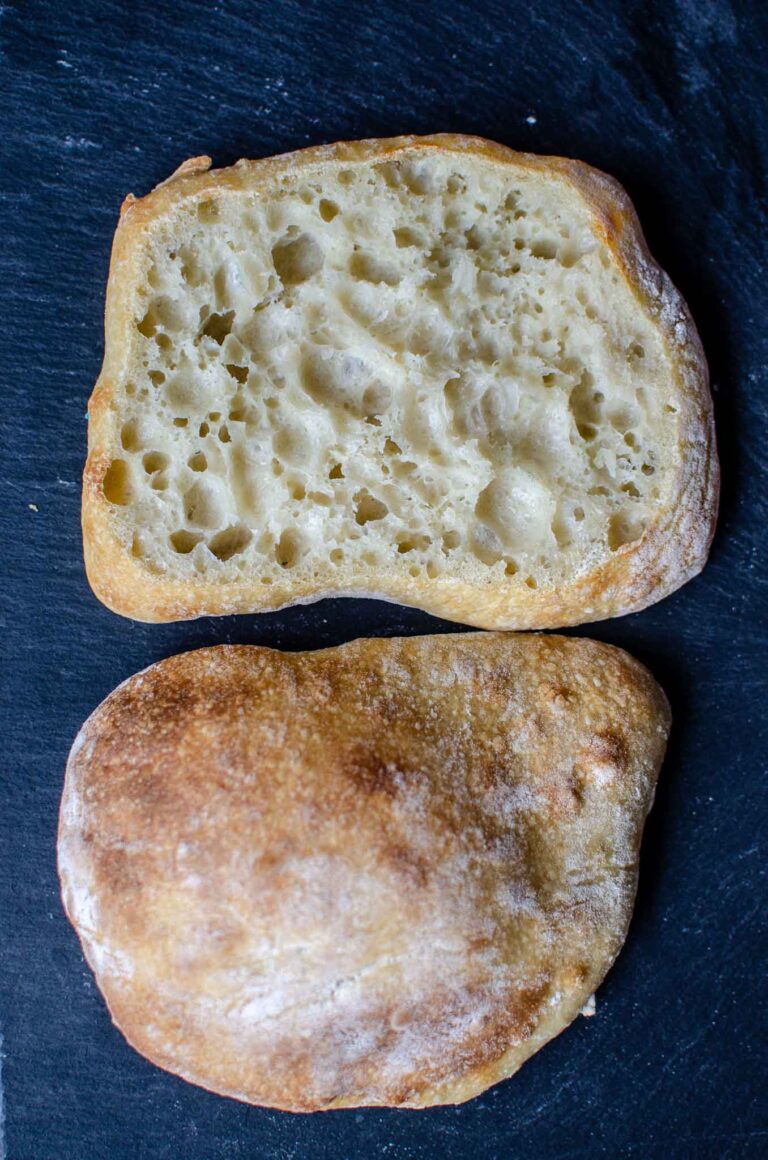Sourdough Pizza Dough Recipe – With Freezing Instructions
This post may contain affiliate links. As an Amazon Associate, I may receive a small commission, at no cost to you, if you make a purchase. Please read our disclosure policy.
This sourdough pizza dough recipe is the perfect recipe for family pizza nights. Just like my easy over night bagels or sourdough bread, this sourdough pizza dough has all the benefits of a long fermentation process and is made without commercial yeast.
Making delicious pizza at home using this homemade sourdough pizza crust recipe couldn’t be easier. With just a few minutes to mix up the dough in the morning, the dough is ready at dinner time with little additional effort. Make a large batch and freeze the extra dough for a hassle-free dinner option.
A dream of ours is to build an outdoor pizza oven. Until that day comes, we make homemade pizza using a simple pizza stone in the oven or on the grill with delicious results.

Sourdough Pizza Dough Equipment
- Stand mixer or large bowl and dough whisk
- Pizza stone
- Digital kitchen scale
- Parchment paper and baking sheet or pizza peel
Sourdough Pizza Dough Ingredients
- Active starter – The starter needs to be fed with plenty of bubbles and activity.
- All-purpose flour or bread flour – I have used both with much success with not too much of a difference between the two, so use either with confidence.
- Warm water – Temperature plays a vital role in the speed of fermenting. Use warm water to help hasten the process, especially during the winter months.
- Salt – Adds flavor to the crust.
- Olive oil – Helps the dough to stretch, maintain its hydration, and adds flavor.
Sourdough Pizza Dough Instructions
Dough
This sourdough pizza dough requires an active sourdough starter that is full of bubbles and activity. Feed the starter the night before before you plan to start your pizza dough.
Use a scale for accurate measurements to give you the most consistent results, especially as you begin to learn to work with sourdough.
Measure out the active sourdough starter, warm water, salt, and olive oil into the bowl of a stand mixer fitted with the dough hook. Mix on low for 30 seconds to break up the starter and begin to work it into the water and oil. It doesn’t need to be fully mixed.
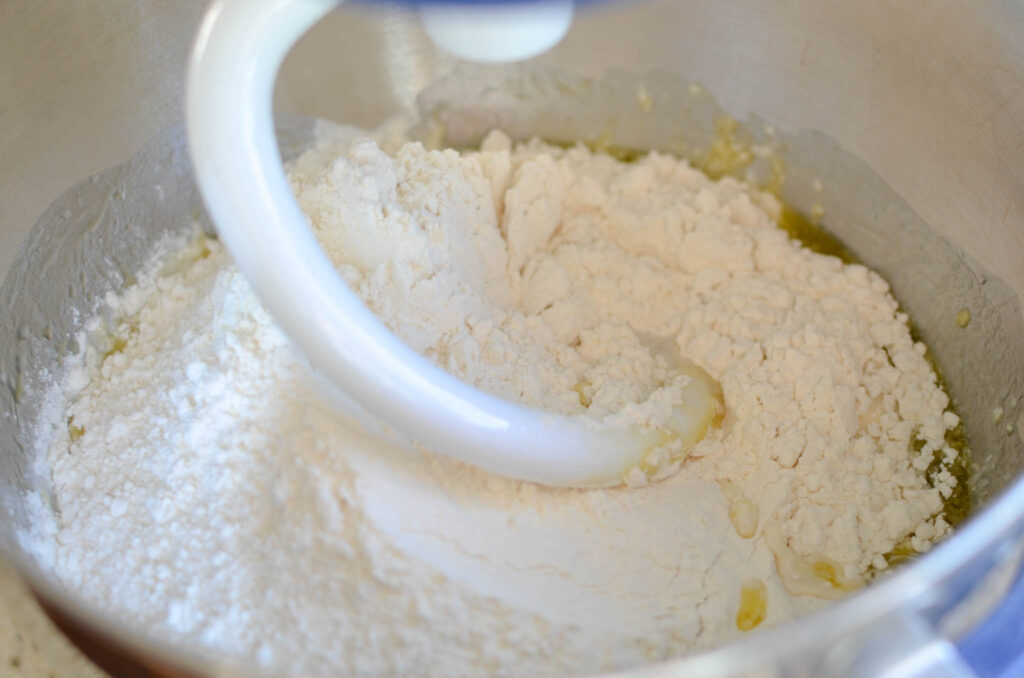
Measure and add flour to the bowl. Mix on low to incorporate the flour into the wet ingredients, gradually increasing the speed to medium. You’ll see the dough come together and clean the side of the bowl as it’s mixed. Continue mixing for 5 minutes as the dough begins to develop the gluten. The dough will be shaggy and easily break when stretched.
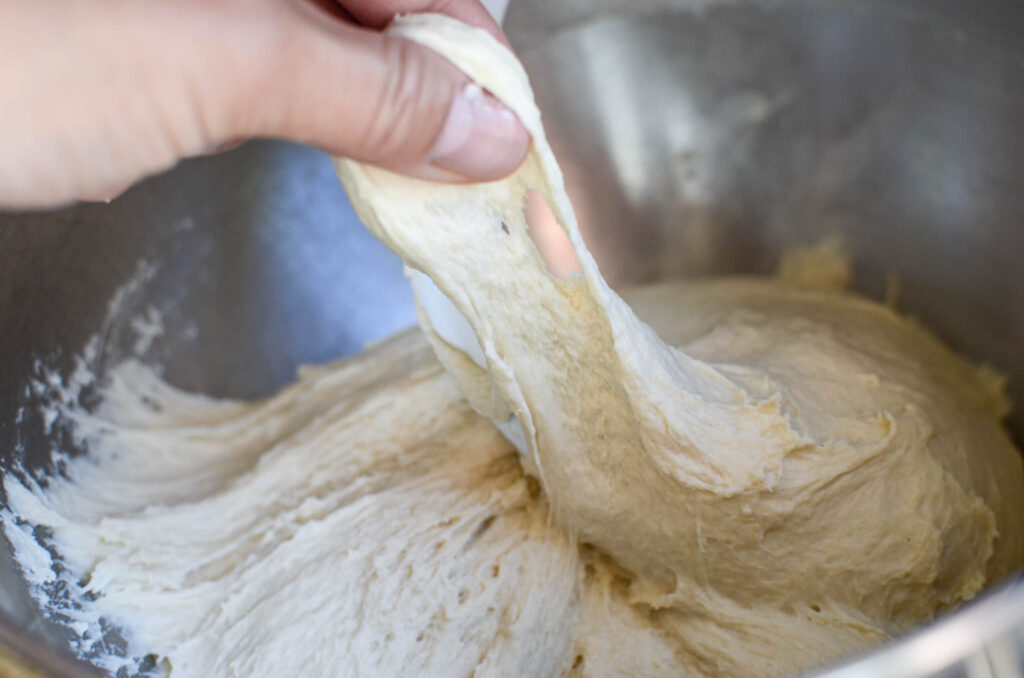
Cover the bowl with a towel so it doesn’t dry out and let the dough rest for 10-15 minutes. The gluten will continue to develop as the dough rests.
Remove the towel and mix again for 5 minutes. You will know the sourdough pizza dough is ready when the texture of the dough is smoother without being sticky and stretches more before breaking.
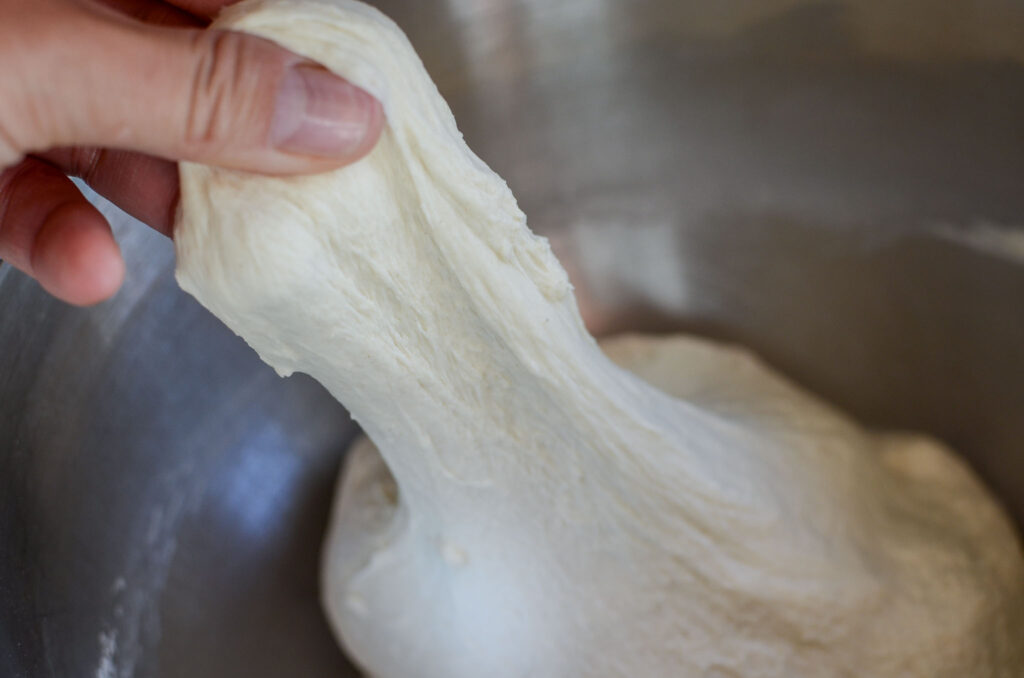
If you decide to knead by hand, place the dough onto a clean work and work the dough until it is smooth and elastic. Avoid adding too much additional flour as it’ll make the dough tough. If the dough is sticking to the work surface, use a bench scraper to gather the dough as you knead.
Bulk Fermentation
Place the pizza dough in a bowl and cover with plastic wrap or a towel for its first rise. Let it rest at room temperature for 8 hours or until the dough has doubled.
Temperature plays a huge role in the timing of the bulk fermentation. The cooler the temp, the slower the pizza dough will ferment. If the temperature in the home is cool, move the dough to an oven with the light on or a warm place in the home.
Shape
Preheat the oven and pizza stone to 500 degrees.
Turn out the dough onto a lightly floured surface. Divide the balls of dough into 4 equal portions, roughly 270g each, and allow to rest for it’s short second rise while you prepare the toppings.
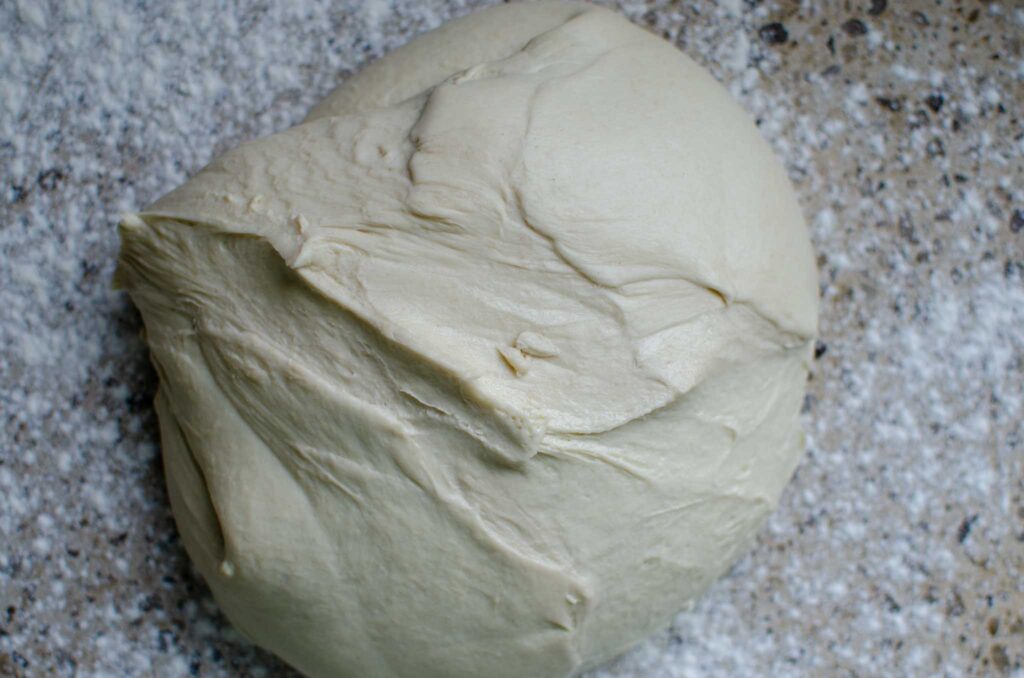
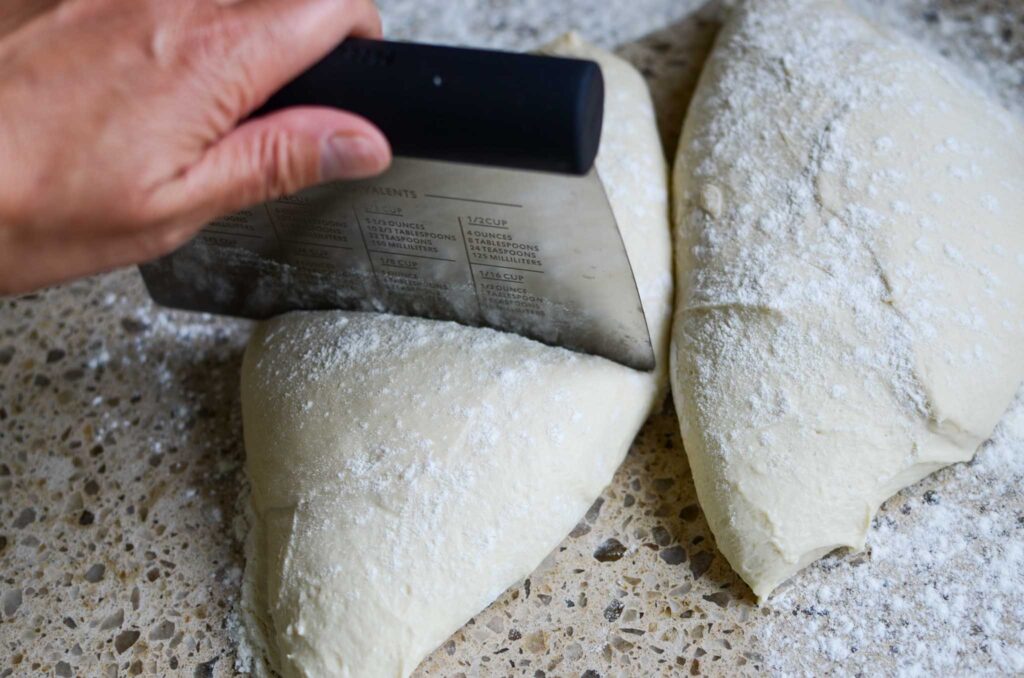
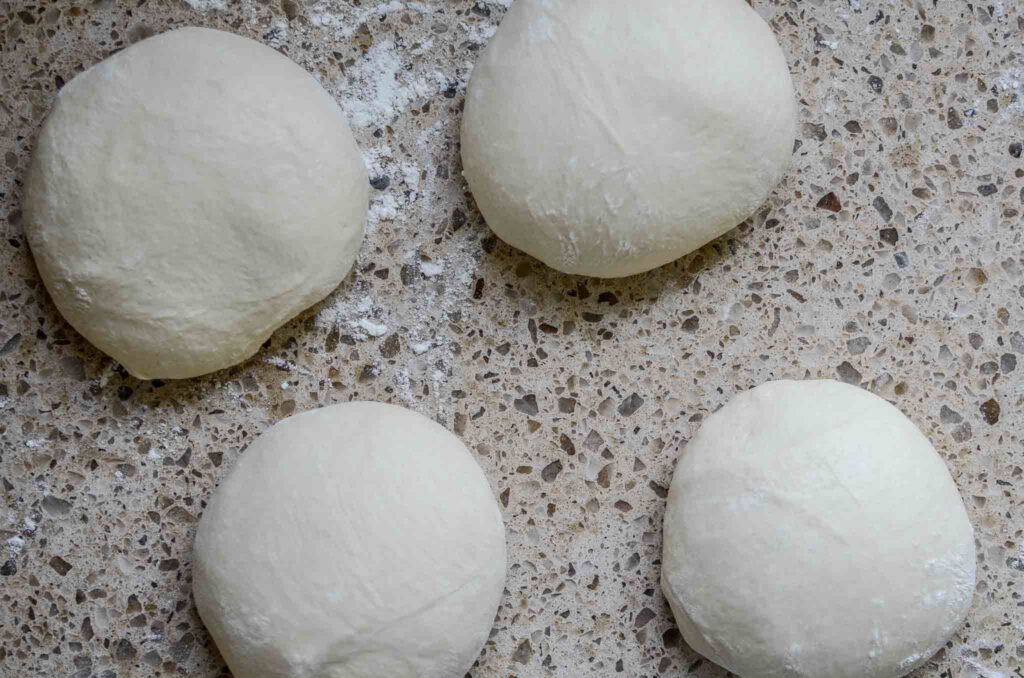
Handle each piece of dough as little as possible to preserve the air bubbles, ensuring your crust is as light and airy as possible.
Pick up the dough balls on the top edge of the dough, letting the dough hang and gravity help to stretch the dough. Rotate the dough, holding onto the edges to create a round circle.
Assemble
Once the dough is roughly 6-8 inches across, lay flat on a pizza peel that is lightly dusted with corn flour or semolina flour. This will help the dough slide off of the peel into the oven. The corn flour does make a mess in the oven, so a cleaner option is to build the pizza on a piece of parchment paper instead. With the tips of your fingers, starting in the middle of the dough and working out to the edges, press the dough to stretch to your desired thickness, leaving the edges slightly thicker than the middle. No need for a rolling pin. If the dough is stiff, let rest for a few minutes to let the gluten relax and then continue shaping.
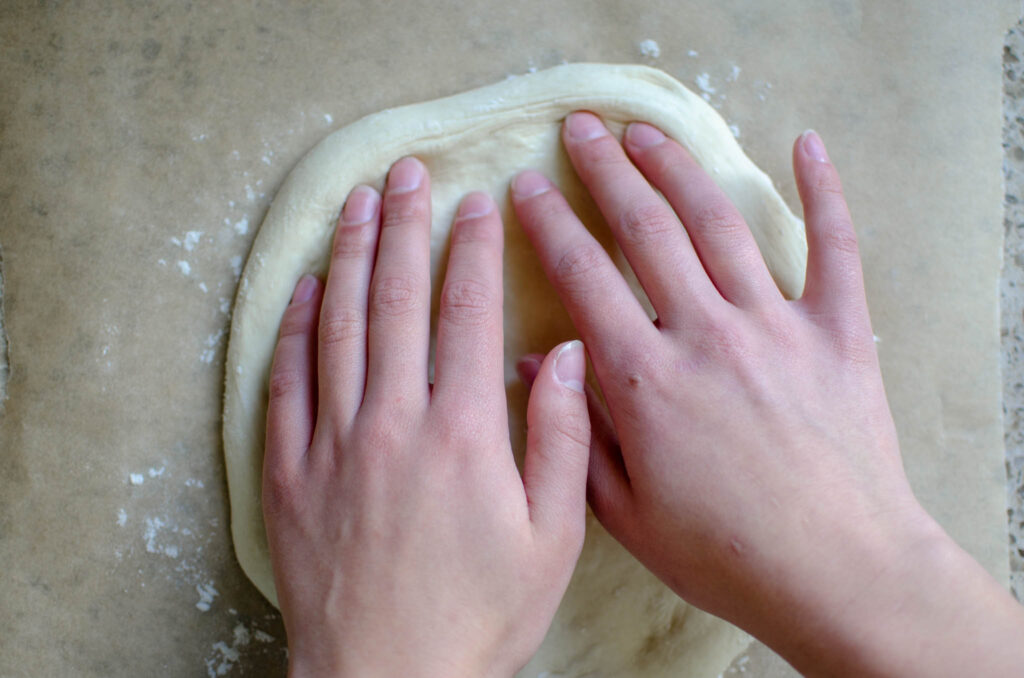
If you don’t have a pizza peel, use a rimless baking sheet or cutting board to transfer the pizza.
Lightly spread pizza sauce onto the crust and top with your favorite toppings.
Bake
The trick to having a crisp crust is to make sure that the pizza dough is baked on a hot surface. This is why pizza ovens are ideal. But for those of us that still are without a pizza oven, the pizza stone is the next best thing. If you plan to have pizza at home often, it’s worth buying a pizza stone.
Slide the pizza into the oven onto the pizza stone and bake for 10-12 minutes. The crust with be golden brown and the cheese melted.
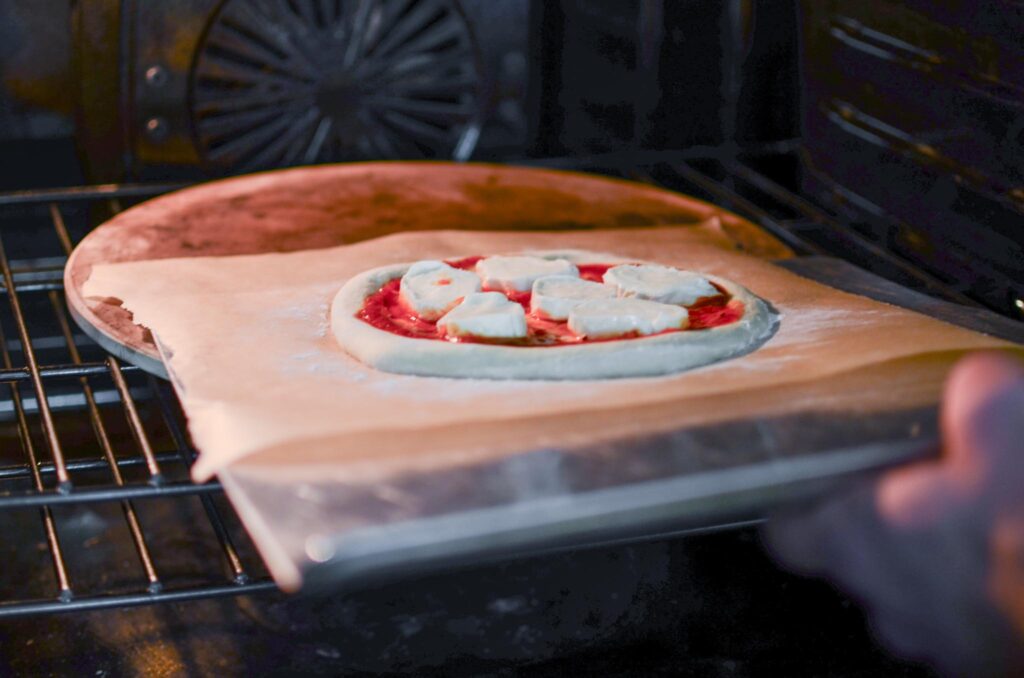
Place on a cutting board, cut with a pizza cutter and enjoy.
How to Store Sourdough Pizza Dough
This sourdough pizza dough is great to work with and has a more flexible timeline than my sourdough bread recipe. Prepare the dough in advance and store in the refrigerator until you’re ready to shape. Place the dough in an airtight container and into the fridge once the dough has doubled. Best used with in 24 hours.
Can You Freeze Sourdough Pizza Dough?
Yes! This a great way to get some of the prep work done ahead of time so you can have homemade pizza made in minutes. You can freeze the dough two different ways.
Freezing Sourdough Pizza Dough Balls
After the dough has doubled, divide into dough balls and place each ball in a freezer plastic bag. Label with the date and place into the freezer. To use the dough, thaw at room temperature and shape the same as directed above.
Freezing Shaped Sourdough Pizza Crust
To plan ahead one additional step, make the pizza dough into the pizza shape and then freeze. Shape each dough ball on a piece of parchment paper and onto a baking sheet. Place into the freezer for an hour so they freeze without sticking to each other. Then stack the frozen shaped pizza crusts with the parchment paper on top of one another and into a plastic freezer bag, removing as much air as possible. Best used within 3 months.
To use, remove a frozen pizza crust as you need them and top as usual. No need to thaw ahead of time, it will thaw as you add the toppings.
Same-Day Instructions/Sample Baking Schedule
- 8 am – mix dough
- 8:30 am – bulk ferment
- 5 pm – shape and preheat oven
- 5:15pm – assemble pizzas
- 5:30pm – bake
FAQs and Tips
The crust is crisp and holds up well. Use a thin layer of sauce and don’t overload the toppings to ensure your pizza crust doesn’t get soggy.
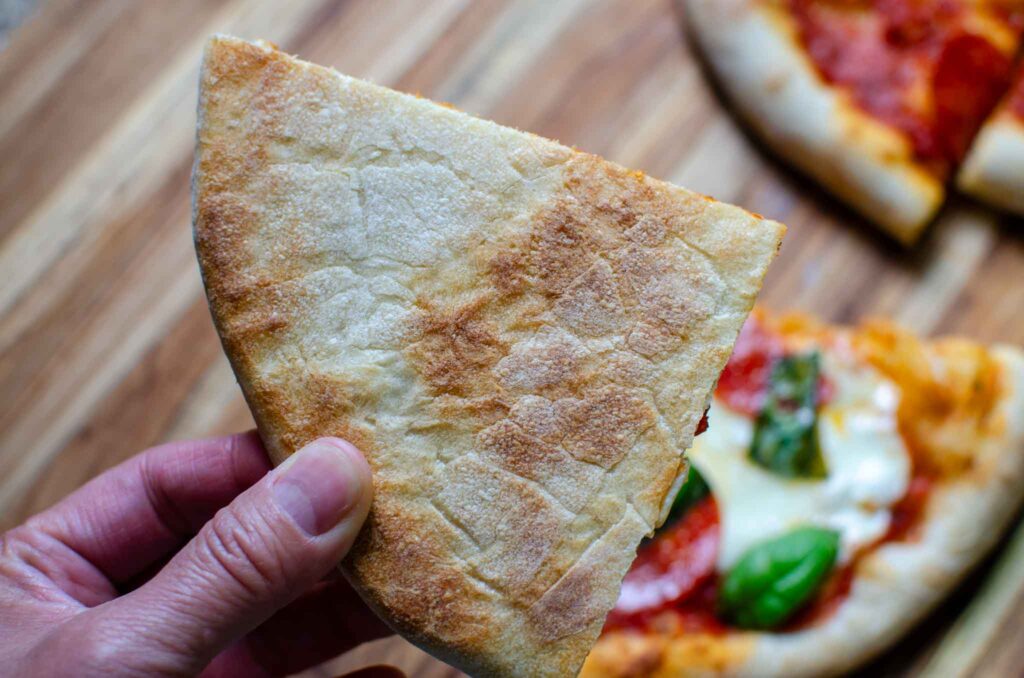
What do I do if My Sourdough Pizza is Too Sticky?
The dough does from being sticky and wet, to silky and smooth as the gluten is developed. Resist the temptation to add more flour. If you find that your pizza dough is too sticky, use a bench scraper to continue working the dough until it’s smooth once enough gluten is formed.
Can I Use Sourdough Starter Discard?
This depends on how mature your starter is. A young starter isn’t strong enough on its own to give the sourdough pizza dough enough lift. You will need to add additional yeast to help ensure a good rise.
If you have a mature starter that consistently doubles, then there’s enough wild yeast in it to use in this sourdough pizza dough recipe. It will take longer to bulk ferment, so plan accordingly.
Can I Use a Cast Iron Skillet to Make Sourdough Pizza?
Yes! Preheat your oven to broil and heat the skillet at medium high heat on the stove. Make sure your toppings are pepped and ready to add to the pizza. Shape the pizza dough into an 8-inch round circle. Carefully lift the pizza dough into the hot cast iron skillet, making sure you don’t burn yourself.
Immediately add sauce and toppings, continuing to cook on the stove for 5-6 more minutes. Use a spatula to check that the bottom of the crust is getting cooked all the way. Transfer to the oven and broil for 2-4 minutes to cook the toppings. Since stoves and ovens vary, be sure to watch the pizza so it doesn’t burn. Rely on how to pizza looks for doneness over the time.
I’d love to hear from you! Please leave a comment and rate the recipe. Tag photos #Lockremhomestead over on Instagram to share pictures of your Sourdough Pizza Dough!

Sourdough Pizza Dough Recipe – With Freezing Instructions
Ingredients
- 110 g active sourdough starter ½ cup
- 20 g olive oil 1½ T
- 10 g salt 2 tsp
- 350 g water 1⅓ cups + 2 T
- 600 g all-purpose or bread flour 4 ¾ cups
Instructions
Dough
- This sourdough pizza dough requires an active sourdough starter that is full of bubbles and activity. Feed the starter the night before before you plan to start your pizza dough.Use a scale for accurate measurements to give you the most consistent results, especially as you begin to learn to work with sourdough.
- Measure out the active sourdough starter, warm water, salt, and olive oil into the bowl of a stand mixer fitted with the dough hook. Mix on low for 30 seconds to break up the starter and begin to work it into the water and oil. It doesn't need to be fully mixed.
- Measure and add flour to the bowl. Mix on low to incorporate the flour into the wet ingredients, gradually increasing the speed to medium. You'll see the dough come together and clean the side of the bowl as it's mixed. Continue mixing for 5 minutes as the dough begins to develop the gluten. The dough will be shaggy and easily break when stretched.
- Cover the bowl with a towel so it doesn't dry out and let the dough rest for 10-15 minutes. The gluten will continue to develop as the dough rests.
- Remove the towel and mix again for 5 minutes. You will know the sourdough pizza dough is ready when the texture of the dough is smoother without being sticky and stretches more before breaking.
- If you decide to knead by hand, place the dough onto a clean work and work the dough until it is smooth and elastic. Avoid adding too much additional flour as it'll make the dough tough. If the dough is sticking to the work surface, use a bench scraper to gather the dough as you knead.
Bulk Fermentation
- Place the pizza dough in a bowl and cover with plastic wrap or a towel for its first rise. Let it rest at room temperature for 8 hours or until the dough has doubled.Temperature plays a huge role in the timing of the bulk fermentation. The cooler the temp, the slower the pizza dough will ferment. If the temperature in the home is cool, move the dough to an oven with the light on or a warm place in the home.
Shape
- Preheat the oven and pizza stone to 500 degrees.
- Turn out the dough onto a lightly floured surface. Divide the balls of dough into 4 equal portions and allow to rest while you prepare the toppings. Handle the each piece of dough as little as possible to keep those air bubbles, ensuring your crust is as light and airy as possible.
- Stretch the dough balls into a circle roughly 8 inches across right onto the pizza peel that is lightly dusted with corn flour. This will ensure that the pizza slides off easily into the oven. The best way to transfer the pizza with out a pizza peel is to shape the pizza on a piece of parchment paper that is lightly dusted with flour.
Assemble
- Once the dough is roughly 6-8 inches across, lay flat on a pizza peel that is lightly dusted with corn flour or semolina flour. This will help the dough slide off of the peel into the oven. The corn flour does make a mess in the oven, so a cleaner option is to build the pizza on a piece of parchment paper instead.
- With the tips of your fingers, starting in the middle of the dough and working out to the edges, press the dough to stretch to your desired thickness, leaving the edges slightly thicker than the middle.
- If you don't have a pizza peel, use a rimless baking sheet or cutting board to transfer the pizza.
- Lightly spread sauce onto the crust and top with your favorite toppings.
Bake
- The trick to having a crisp crust is to make sure that the pizza dough is baked on a hot surface. This is why pizza ovens are ideal. But for those of us that still are without a pizza oven, the pizza stone is the next best thing. If you plan to have pizza at home often, it's worth buying a pizza stone.
- Slide the pizza into the oven onto the pizza stone and bake for 10-12 minutes. The crust with be golden brown and the cheese melted.
- Place on a cutting board, cut with a pizza cutter and enjoy.
How to Store Sourdough Pizza Dough Instructions
- This sourdough pizza dough is great to work with and has a more flexible timeline than my sourdough bread recipe. Prepare the dough in advance and store in the refrigerator until you're ready to shape. Place the dough in an airtight container and into the fridge once the dough has doubled. Best used with in 24 hours.
Freezing Sourdough Pizza Dough Balls
- After the dough has doubled, divide it into e equal size dough balls and place each ball in a freezer plastic bag. Label with the date and place into the freezer. To use the dough, thaw at room temperature and shape the same as directed above.
Freezing Shaped Sourdough Pizza Crust
- To plan ahead one additional step, make the pizza dough into the pizza shape and then freeze. Shape each dough ball on a piece of parchment paper and onto a baking sheet. Place into the freezer for an hour so they freeze without sticking to each other. Then stack the frozen shaped pizza crusts with the parchment paper on top of one another and into a plastic freezer bag, removing as much air as possible. Best used within 3 months. To use, remove a frozen pizza crust as you need them and top as usual. No need to thaw ahead of time, it will thaw as you add the toppings.


